Car tech: enhancing in-cabin comfort and safety cars
- Parkers explains the various tech for comfort, safety and convenience
- Find out what the latest car technologies are
- Evaluate what car tech is worth paying extra for
Technology is increasingly integrated into our cars faster than Alan Taylor-Jones’ beard grows (and that never stops). Electronic features, such as assisted braking, ESC and satellite navigation have been around for decades now.
The invention of the internet, introduction of smartphones and development of the Internet of Things (IoT), however, has placed the car firmly in the expanding web of networked devices. The future promises a faster, frictionless experience, but we’re in a bit of an awkward transition phase at the moment.
While it’s easy to dismiss all car technology as intrusive and unwanted—especially when its glitching—stats from the US suggest autonomous emergency braking (AEB) alone reduces accidents by 25%.
What isn’t clear is whether those collisions being avoided would have otherwise not occurred had it not been for the greater amount of potentially distracting technology in the cabin. However, such an argument is a moot point at this juncture.
Trying to remove younger generations’ preoccupation with smartphones is arguably akin to removing the sale of cigarettes in the 1940s and 50s, when the link to cancer was first identified. So accepting car technology is here to stay, let’s look at all the cool things it can do.
In this guide, we’ll be looking at the five key areas car technology is making a difference; safety, comfort, convenience, communication and environment.
What car technology makes a car safer?
- A guide to ADAS
- Warning features vs. intervention features
- Interface – voice and gesture control
- Cruise Control
- Head-up displays
Which in-car technologies enhance comfort?
- Virtual Cockpit
- Infotainment
Which car technologies improve convenience?
- Bluetooth
- Dashcams
- Wireless charging
- Alexa in the car
Aftermarket car tech that can enhance your older motor
What car technology makes a car safer?
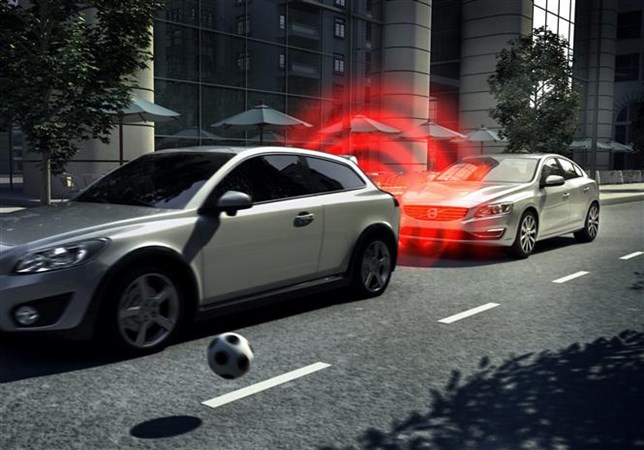
Safety is one of the key reasons car technology has been integrated into cars. Humans are amazing drivers, but our brains are easily distracted, fatigued and thus we are fallible. 94% of accidents on the road are due to human error, according to ORSA. The safest cars aren’t always ones driven by humans.
Advanced Driver Assistance Systems (ADAS) is the umbrella term for the functionality that helps a driver. With more sensors in the vehicle, the car is collecting far more data than ever before.
Warning features vs. Intervention features
Assisting a driver can merely be a visual or aural warning, like Blindspot Monitor, Lane Departure Warning, Cross Traffic Alert, Forward Collision Warning and Traffic Sign Recognition. These are designed to give the driver all the information needed to make their journey safely.
Increasingly, however, vehicle technology is being programmed to intervene by, for example, applying the brakes, as in Hill-Start Assist, AEB or Intelligent Speed Assist, the latter two of which are now mandated for the European market.
Euro NCAP announced in 2020 that it would start evaluating the ADAS features of vehicles more closely to give consumers a better understanding of how effective they truly are. What’s more, insurers have started collecting data on cars with ADAS to offer cheaper policies to drivers whose cars are fitted with ADAS.
Cruise control is becoming a bigger part of drivers’ commutes. Many systems have been enhanced to become adaptive cruise control, featuring intervention technologies such as Lane Keep Assist and dynamic radar distancing. These use the same combination of sensors and radar to keep drivers safer by maintaining their position in the road and a specified distance from the car in front, respectively.
Voice control
Voice control is also being more widely used, in a bid to discourage drivers from being distracted with adjusting the radio, climate control or making a call—there’s more below on these features. Head-up displays are also an effective way to keep drivers’ eyes looking ahead. The projected information
Finally, there’s an SOS call button, which in an emergency will connect you directly to 999.
Which in-car technologies enhance comfort?
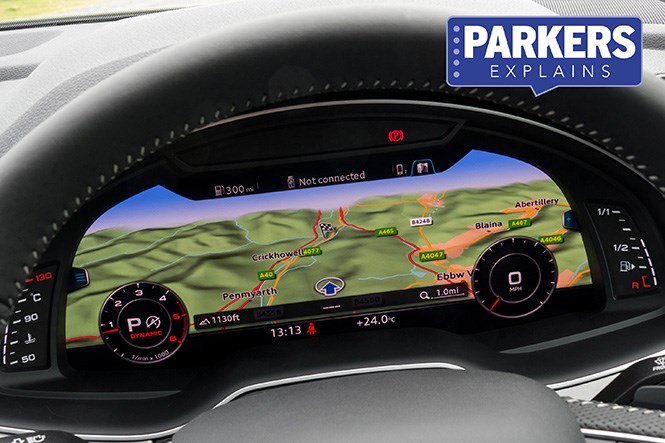
Stepping into new cars can feel like stepping into the nose of an aeroplane. In fact, car makers often refer to this area of the car as the ‘cockpit’. Gone are the manual dials for the speedo, mileage and rev counter on the instrument panel.
Nowadays, fancy display screens can be customised to show all kinds of information and in different ways. Whether you want those manual-style dials back, or prefer a digital reading, you can configure your cluster display to be as simple or comprehensive as you wish.
Adjusting the in-cabin temperatures have been fully or partially digitised, which admittedly isn’t to every driver’s liking. Yet, natural language processing (NLP) software supports voice control. Now, drivers can press a button on the steering wheel, say ‘I’m hot’ and the system will adjust the climate control accordingly.
And of course, for the cooler months, heated seats and steering wheels are fast becoming more favoured options too.
Infotainment
So now you’re sitting comfortably, what are you listening to? The infotainment technology in cars has really exceeded what drivers of the 1950s, 60s or 70s could have imagined—even watching The Jetsons in their flying cars.
While the hideous portmanteau of information and entertainment becomes normalised, phone mirroring technology, such as Mirrorlink, Apple Carplay and Android Auto, give drivers a more familiar selection of apps and enable a seamless experience from home to car to destination.
Which car technologies improve convenience?

Many of the new car tech features are a nice-to-have, rather than a must-have.
Parking
A great example is automated parking, also known as Park Assist. Though it’s not an absolute must, if you regularly have to parallel park and are nervous about clipping your alloys on the kerb, parking aids can prove helpful and frankly, as we’ve pointed out in this top ten must-have options, we wouldn’t be without a reversing camera now.
Bluetooth and wireless charging
Equally, Bluetooth and wireless charging are brilliant ways to ensure the cockpit isn’t untidy with cables.
Dashcams
Dashcams have been on the market for a few years as aftermarket solution. We’ve tested the Vantrue M2 and Thinkware’s Q800, Q1000 and U1000. We’ve pitched them against one another and themselves. What’s more, we’ve looked at budget dashcams, dual-view, wifi dashcams and mirror cams.
That’s why we can pinpoint which features are best on a dashcam. You can check out the fanciest dashcams, too.
All you need to know about dash cams
A comprehensive guide to understanding how dash cams work, how they can save you money and which type is best for you.
Staying handsfree
Parents and busy motorists who regularly lose their car keys to the bottom of a bag love keyless entry and keyless ignition. Some gesture control features, like handsfree tailgate are brilliant too (though we should point out we weren’t especially impressed with BMW’s gesture control in the cabin).
If you’re familiar with Alexa in the house, you can take this digital assistant into your car, too.
Staying on the right side of the law
Radar detectors help drivers ensure they’re maintaining the right speed on the approach to safety cameras.
Aftermarket car tech that can enhance your older motor
While some of the car tech highlighted above focuses on gadgets that can be found integrated into new cars for sale, you can enhance the driving experience of your current motor with aftermarket devices.
Tyre pressure monitor systems (TPMS)
Using a smart device to monitor your tyre pressure can be handy, particularly in classic cars that pre-date many of the features we’ve come to take for granted.
The best aftermarket parking sensors you can buy
Though reversing cameras have become a must-have on new cars, even having parking sensors fitted to your car helps with squeezing into tighter parking spots.
Latest articles
-
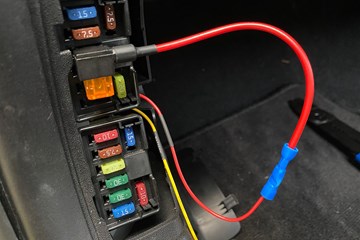 Get set up right: everything you need to know about installing a dash camA dash cam is only useful if it’s properly installed — but dealing with messy cables and occupied USB ports can be a hassle. The solution? Hardwiring. This keeps your...
Get set up right: everything you need to know about installing a dash camA dash cam is only useful if it’s properly installed — but dealing with messy cables and occupied USB ports can be a hassle. The solution? Hardwiring. This keeps your... -
 VIOFO A329 Dashcam Review: Do you need 60FPS?The technology that goes into popular dashcams is improving every day, and devices like the VIOFO A329 continue to push the boundaries of what we should expect. While 4K resolution...
VIOFO A329 Dashcam Review: Do you need 60FPS?The technology that goes into popular dashcams is improving every day, and devices like the VIOFO A329 continue to push the boundaries of what we should expect. While 4K resolution... -
-
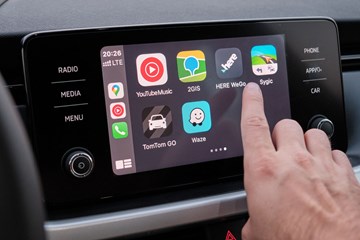 The best Christmas deals on Apple CarPlay screens: a motoring expert’s choicesIf you’re not quite satisfied with your car’s infotainment system, then you might be interested in getting a wireless car stereo to make use of Apple CarPlay or Android Auto...
The best Christmas deals on Apple CarPlay screens: a motoring expert’s choicesIf you’re not quite satisfied with your car’s infotainment system, then you might be interested in getting a wireless car stereo to make use of Apple CarPlay or Android Auto... -
 Groov-e Power Bank ReviewPortable chargers like the Groov-e power bank can be useful in a variety of driving situations, especially if you find yourself with a flat phone battery in an unfamiliar location....
Groov-e Power Bank ReviewPortable chargers like the Groov-e power bank can be useful in a variety of driving situations, especially if you find yourself with a flat phone battery in an unfamiliar location.... -
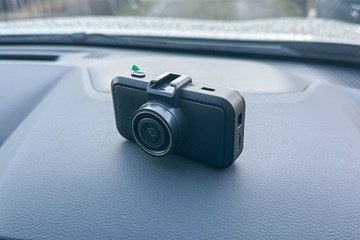 MIOFIVE S1 Ultra ReviewA reliable dashcam, like the MIOFIVE S1 Ultra, can be very useful as it acts as another pair of eyes on the road, and during a road traffic collision it...
MIOFIVE S1 Ultra ReviewA reliable dashcam, like the MIOFIVE S1 Ultra, can be very useful as it acts as another pair of eyes on the road, and during a road traffic collision it... -
-
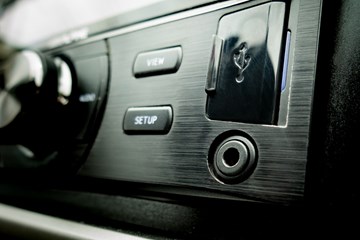 The best in-car phone streaming devices 2025There was a time when in-car entertainment systems consisted of nothing more than a radio and CD player. Today, with so many different apps and sources and with so much...
The best in-car phone streaming devices 2025There was a time when in-car entertainment systems consisted of nothing more than a radio and CD player. Today, with so many different apps and sources and with so much... -
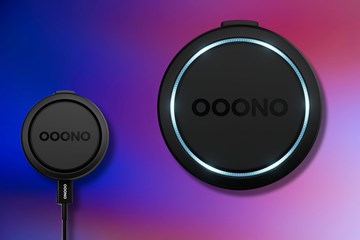 OOONO radar detectors: everything you need to knowYou may or may not have heard of OOONO, but it’s a relatively niche firm specialising in radar detection equipment. The most notable products are the circular-shaped warning devices from...
OOONO radar detectors: everything you need to knowYou may or may not have heard of OOONO, but it’s a relatively niche firm specialising in radar detection equipment. The most notable products are the circular-shaped warning devices from... -
-
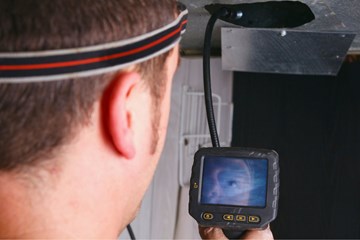 The best car inspection cameras to help speed up car repairs and save you cashHave you ever wondered what the inside of your engine is like, but you can’t gain access without removing the bowels using a plethora of hand tools? This is exactly...
The best car inspection cameras to help speed up car repairs and save you cashHave you ever wondered what the inside of your engine is like, but you can’t gain access without removing the bowels using a plethora of hand tools? This is exactly... -
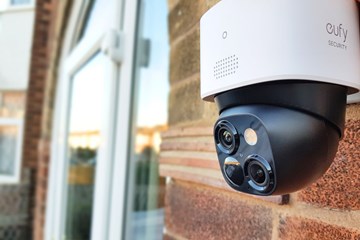 Eufy SoloCam S340 ReviewFor someone who wants things in life to be completely fuss-free, the Eufy SoloCam S340 Security Camera is a seriously compelling option. It’s the latest in the line of Eufy...
Eufy SoloCam S340 ReviewFor someone who wants things in life to be completely fuss-free, the Eufy SoloCam S340 Security Camera is a seriously compelling option. It’s the latest in the line of Eufy... -
 CTEK MXS 5.0 Battery Charger reviewThe CTEK MXS 5.0 trickle charger is one of the more popular battery chargers on sale. It sits between the less powerful MXS 0.8 and 3.8 models, yet isn’t as...
CTEK MXS 5.0 Battery Charger reviewThe CTEK MXS 5.0 trickle charger is one of the more popular battery chargers on sale. It sits between the less powerful MXS 0.8 and 3.8 models, yet isn’t as... -
-
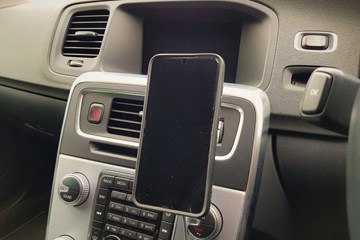 The Best MagSafe car mounts tested by Parkers 2025MagSafe car mount technology was developed by Apple and launched in the iPhone 12 series and then in all of the subsequent generations of iPhones that followed. It’s a form...
The Best MagSafe car mounts tested by Parkers 2025MagSafe car mount technology was developed by Apple and launched in the iPhone 12 series and then in all of the subsequent generations of iPhones that followed. It’s a form... -
 The best Black Friday dashcam deals 2024 - save on Nextbase, Road Angel and moreOnce upon a time, dash cams were reserved for the most tech savvy of us, but as technology has advanced and costs have decreased, dash cams are well within the...
The best Black Friday dashcam deals 2024 - save on Nextbase, Road Angel and moreOnce upon a time, dash cams were reserved for the most tech savvy of us, but as technology has advanced and costs have decreased, dash cams are well within the... -
-
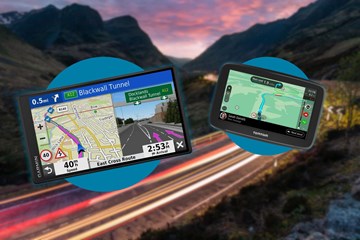 These bargain sat navs will keep you on the right tracks this Black FridayWhy would we want to bring you the best Christmas sat nav deals when most new cars today come with sat nav as standard? Well, there’s your answer – most....
These bargain sat navs will keep you on the right tracks this Black FridayWhy would we want to bring you the best Christmas sat nav deals when most new cars today come with sat nav as standard? Well, there’s your answer – most.... -
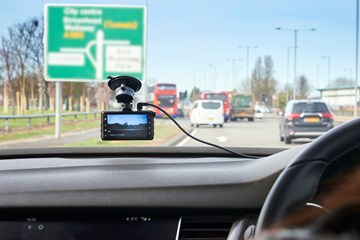 The best Black Friday dashcam deals 2024 - save on Nextbase, Road Angel and moreMost car journeys are pretty uneventful, but here at Parkers, we’ve got the best dashcam deals. You never know when to expect the unexpected, and that dashcam could provide crucial...
The best Black Friday dashcam deals 2024 - save on Nextbase, Road Angel and moreMost car journeys are pretty uneventful, but here at Parkers, we’ve got the best dashcam deals. You never know when to expect the unexpected, and that dashcam could provide crucial... -
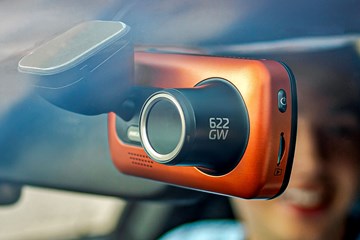 The best features to have on a dash camHaving an objective, independent witness on board while driving around is the biggest appeal of owning a car dash cam. Its primary function is to capture video evidence in the...
The best features to have on a dash camHaving an objective, independent witness on board while driving around is the biggest appeal of owning a car dash cam. Its primary function is to capture video evidence in the... -
-
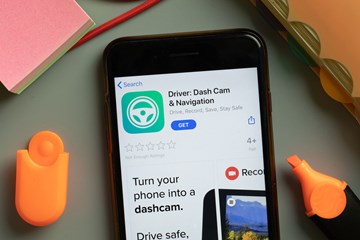 Save money by using your phone as a dash cam – learn how!Buying one of the best dash cams is all well and good, but you might not want to sink that much money into onedash cam. Even if you opt for...
Save money by using your phone as a dash cam – learn how!Buying one of the best dash cams is all well and good, but you might not want to sink that much money into onedash cam. Even if you opt for... -
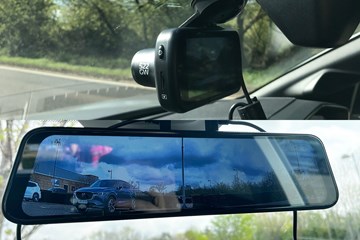 Mirror cam vs dash cam: which is better?If you’re looking for an in-car camera for additional security and peace of mind on the road, you may have encountered many of the best mirror dash cams. These types of...
Mirror cam vs dash cam: which is better?If you’re looking for an in-car camera for additional security and peace of mind on the road, you may have encountered many of the best mirror dash cams. These types of... -
-
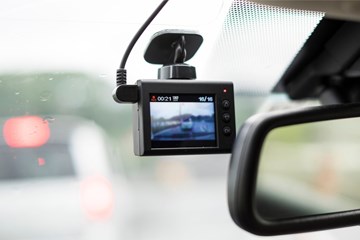 The best dual dashcams 2025If you’ve been browsing for the best dashcams available, you’ll have undoubtedly come across dual dashcams. These dashcams come in two pieces connected by a big cable and could be...
The best dual dashcams 2025If you’ve been browsing for the best dashcams available, you’ll have undoubtedly come across dual dashcams. These dashcams come in two pieces connected by a big cable and could be... -
 Miofive 4K 5G Dash Cam: Quick reviewModern dash cams, like this Miofive example, are a wonderful thing. They can be worth their weight in gold in case of an accident or incident and help you show...
Miofive 4K 5G Dash Cam: Quick reviewModern dash cams, like this Miofive example, are a wonderful thing. They can be worth their weight in gold in case of an accident or incident and help you show... -
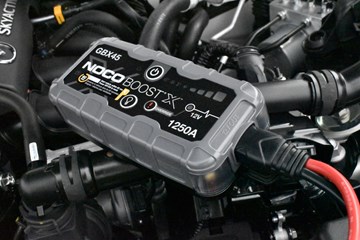 NOCO Boost X GBX45: Quick reviewThe flat car battery scenario is never ideal. It always happens when you’re running late or it’s torrential rain and you’re wearing your Sunday finest. It’s this fear of a...
NOCO Boost X GBX45: Quick reviewThe flat car battery scenario is never ideal. It always happens when you’re running late or it’s torrential rain and you’re wearing your Sunday finest. It’s this fear of a... -
Most popular articles
-
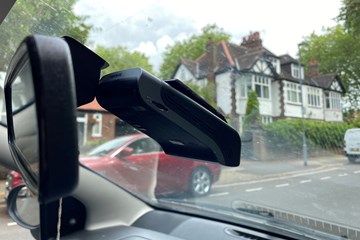 Caught on camera: Best dashcams to buy in 2025 for clear, safe drivingIn real life, road incidents don’t come with dramatic music or slow-motion build-ups—they happen in an instant, without warning. One moment, you’re cruising along, and the next, chaos. In the...
Caught on camera: Best dashcams to buy in 2025 for clear, safe drivingIn real life, road incidents don’t come with dramatic music or slow-motion build-ups—they happen in an instant, without warning. One moment, you’re cruising along, and the next, chaos. In the... -
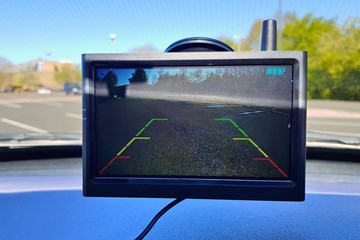 The best reversing cameras that will fit onto your car 2025You might think that adding aftermarket reversing cameras is a bit odd in terms of car upgrades – certainly in comparison to the more popular dash cam setups. Many cars...
The best reversing cameras that will fit onto your car 2025You might think that adding aftermarket reversing cameras is a bit odd in terms of car upgrades – certainly in comparison to the more popular dash cam setups. Many cars... -
-
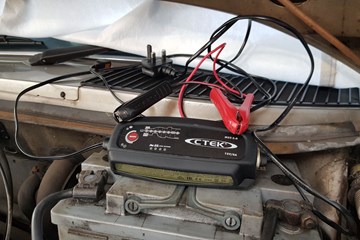 The best smart battery charger for a healthy car batteryTo maintain the health and charge of your car’s battery, you should consider one of the best smart battery chargers available. These are the cream of the crop in the...
The best smart battery charger for a healthy car batteryTo maintain the health and charge of your car’s battery, you should consider one of the best smart battery chargers available. These are the cream of the crop in the... -
 The Best MagSafe car mounts tested by Parkers 2025MagSafe car mount technology was developed by Apple and launched in the iPhone 12 series and then in all of the subsequent generations of iPhones that followed. It’s a form...
The Best MagSafe car mounts tested by Parkers 2025MagSafe car mount technology was developed by Apple and launched in the iPhone 12 series and then in all of the subsequent generations of iPhones that followed. It’s a form... -
 OOONO radar detectors: everything you need to knowYou may or may not have heard of OOONO, but it’s a relatively niche firm specialising in radar detection equipment. The most notable products are the circular-shaped warning devices from...
OOONO radar detectors: everything you need to knowYou may or may not have heard of OOONO, but it’s a relatively niche firm specialising in radar detection equipment. The most notable products are the circular-shaped warning devices from... -
-
 The best aftermarket parking sensors you can trustYou might think aftermarket parking sensors could be a bit of an unusual car upgrade at first, a bit like aftermarket reversing cameras, and you’d be right. Across the internet,...
The best aftermarket parking sensors you can trustYou might think aftermarket parking sensors could be a bit of an unusual car upgrade at first, a bit like aftermarket reversing cameras, and you’d be right. Across the internet,... -
 Save money by using your phone as a dash cam – learn how!Buying one of the best dash cams is all well and good, but you might not want to sink that much money into onedash cam. Even if you opt for...
Save money by using your phone as a dash cam – learn how!Buying one of the best dash cams is all well and good, but you might not want to sink that much money into onedash cam. Even if you opt for... -
-
 The best radar detectors for cars 2025: a motoring expert's choicesRadar detectors can be useful in everyday life. For one thing, nobody wants to be fined for speeding, but even the most conscientious driver can let their concentration slip and...
The best radar detectors for cars 2025: a motoring expert's choicesRadar detectors can be useful in everyday life. For one thing, nobody wants to be fined for speeding, but even the most conscientious driver can let their concentration slip and... -
 MIOFIVE S1 Ultra ReviewA reliable dashcam, like the MIOFIVE S1 Ultra, can be very useful as it acts as another pair of eyes on the road, and during a road traffic collision it...
MIOFIVE S1 Ultra ReviewA reliable dashcam, like the MIOFIVE S1 Ultra, can be very useful as it acts as another pair of eyes on the road, and during a road traffic collision it... -
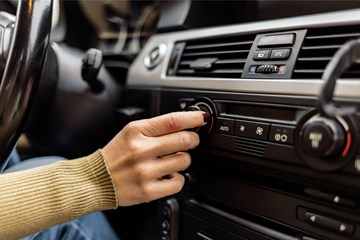 The best DAB radio adapters for your carWhy are the best DAB radio adapters relevant? Do you remember the crinkly AM/FM radios fitted in older cars? The semi-understandable dialogue, warbled tunes, and that horrific static noise now...
The best DAB radio adapters for your carWhy are the best DAB radio adapters relevant? Do you remember the crinkly AM/FM radios fitted in older cars? The semi-understandable dialogue, warbled tunes, and that horrific static noise now... -
-
 Get set up right: everything you need to know about installing a dash camA dash cam is only useful if it’s properly installed — but dealing with messy cables and occupied USB ports can be a hassle. The solution? Hardwiring. This keeps your...
Get set up right: everything you need to know about installing a dash camA dash cam is only useful if it’s properly installed — but dealing with messy cables and occupied USB ports can be a hassle. The solution? Hardwiring. This keeps your... -
 The best mirror dash camsA novel take on dash cams, mirror dashcams clip over an existing rear-view mirror and serve as a forward and rear-facing dashcam to cover both ends of your car. A...
The best mirror dash camsA novel take on dash cams, mirror dashcams clip over an existing rear-view mirror and serve as a forward and rear-facing dashcam to cover both ends of your car. A... -
-
 NOCO Boost X GBX45: Quick reviewThe flat car battery scenario is never ideal. It always happens when you’re running late or it’s torrential rain and you’re wearing your Sunday finest. It’s this fear of a...
NOCO Boost X GBX45: Quick reviewThe flat car battery scenario is never ideal. It always happens when you’re running late or it’s torrential rain and you’re wearing your Sunday finest. It’s this fear of a... -
 The best Christmas deals on Apple CarPlay screens: a motoring expert’s choicesIf you’re not quite satisfied with your car’s infotainment system, then you might be interested in getting a wireless car stereo to make use of Apple CarPlay or Android Auto...
The best Christmas deals on Apple CarPlay screens: a motoring expert’s choicesIf you’re not quite satisfied with your car’s infotainment system, then you might be interested in getting a wireless car stereo to make use of Apple CarPlay or Android Auto... -
 CTEK MXS 5.0 Battery Charger reviewThe CTEK MXS 5.0 trickle charger is one of the more popular battery chargers on sale. It sits between the less powerful MXS 0.8 and 3.8 models, yet isn’t as...
CTEK MXS 5.0 Battery Charger reviewThe CTEK MXS 5.0 trickle charger is one of the more popular battery chargers on sale. It sits between the less powerful MXS 0.8 and 3.8 models, yet isn’t as... -
-
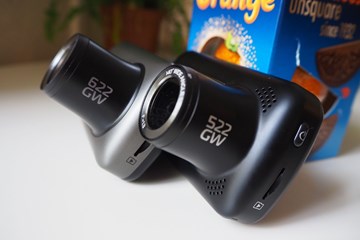 The Parkers guide to Nextbase Dash CamsWhen it comes to the topic, Nextbase dash cams are the king of it. It’s becoming increasingly clear that a good dash cam is a driving essential. Nextbase is a...
The Parkers guide to Nextbase Dash CamsWhen it comes to the topic, Nextbase dash cams are the king of it. It’s becoming increasingly clear that a good dash cam is a driving essential. Nextbase is a... -
 Adding Wi-Fi to your car: complete buyer’s guideA mobile Wi-Fi router (also called MiFi) is a useful device to get car Wi-Fi if you or your family travel a lot. You can usually get a Wi-Fi connection...
Adding Wi-Fi to your car: complete buyer’s guideA mobile Wi-Fi router (also called MiFi) is a useful device to get car Wi-Fi if you or your family travel a lot. You can usually get a Wi-Fi connection... -
-
 Dash cam review: Nextbase 522GW vs 622GWNextbase produces superb top-end dash cams. Its more affordable range has to work very hard to compete with all the budget options out there – plenty of which offer impressive...
Dash cam review: Nextbase 522GW vs 622GWNextbase produces superb top-end dash cams. Its more affordable range has to work very hard to compete with all the budget options out there – plenty of which offer impressive... -
 The best dual dashcams 2025If you’ve been browsing for the best dashcams available, you’ll have undoubtedly come across dual dashcams. These dashcams come in two pieces connected by a big cable and could be...
The best dual dashcams 2025If you’ve been browsing for the best dashcams available, you’ll have undoubtedly come across dual dashcams. These dashcams come in two pieces connected by a big cable and could be... -
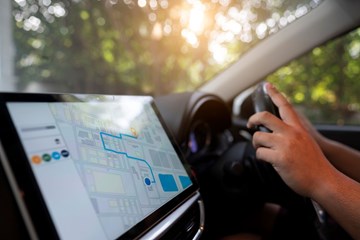 The best aftermarket sat navsSmartphone sat nav apps like Google Maps have made them the go-to choice for many drivers. Real-time traffic updates, turn-by-turn directions, and points of interest – what’s not to like?...
The best aftermarket sat navsSmartphone sat nav apps like Google Maps have made them the go-to choice for many drivers. Real-time traffic updates, turn-by-turn directions, and points of interest – what’s not to like?... -

